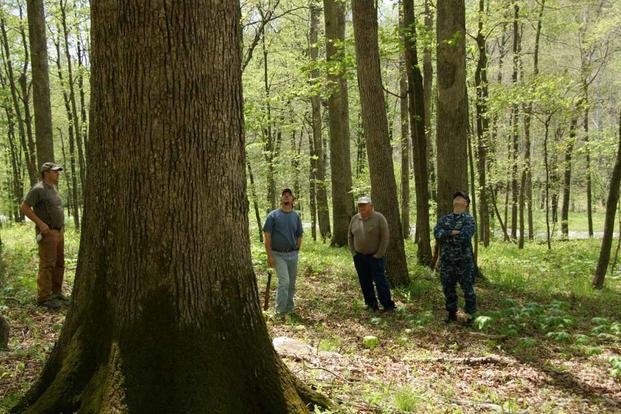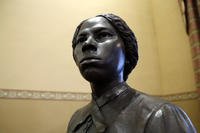Maintaining a forest for ship building would make a lot of sense if ships were still made of wood. But they aren't. So why does the U.S. Navy maintain a white oak forest in the middle of Indiana?
The white oak tree might have been the most fundamental building block of the young United States -- literally. These giants provided the earliest Americans with shelter, built the country, laid the railroads that connected its coasts and kick-started an industrial revolution.
From Maine to Florida and inland to the Great Plains and the American Southwest, white oaks were used to conquer the frontier, enforce U.S. foreign policy and kick the Royal Navy out of our waters. The USS Constitution, the only still-commissioned ship in the U.S. Navy that has sunk another vessel, is made from that same white oak.
And the Navy needs to repair her from time to time.
The Constitution and other ships of its time were made with the hardest woods available for shipbuilders. For the nascent American Navy, the white oak was the perfect hardwood. When the Constitution was launched in 1797, it was one of the most formidable ships of its time, among the strongest, fastest and most powerful ships of the day.

Nowhere was this more apparent than the fight in which the frigate earned its nickname. During its famous encounter with the HMS Guerriere in the War of 1812, it's said the ship's 22-inch-thick hull caused British cannonballs to bounce off its sides. When the U.S. sailors saw this, they were said to have shouted, "Huzzah, her sides are made of iron!"
From that day on, she was known as "Old Ironsides."
There isn't much trouble coming from the king of England these days, and the age of sails has long given way to the age of steam (including nuclear steam). Yet the USS Constitution remains commissioned in the U.S. Navy, connecting the history and traditions of the past to the traditions of today.
The Constitution is the last of the remaining original six frigates authorized by Congress in 1794. The other five were broken up or captured by the mid-1800s. The Constitution survived because its victory over Guerriere was so resounding that keeping her together remained popular among citizens for decades.
She became a training ship for midshipmen at the Naval Academy during the Civil War and, after that, became a notable ship used for ceremonial purposes before being converted into a museum ship in 1907. In 1997, in a celebration of its bicentennial, the Constitution underwent a complete refit and sailed on its own power to ports around the United States.
The refitting of a 200-year-old ship was not an easy task. There aren't a lot of 200-year-old white oak trees lying around. That's why the U.S. Navy had the foresight to grow them.
When the Constitution was constructed, the white oaks used to build it were plentiful, but over time, those resources dried up as American settlers pushed west and used them to build homesteads, railroads and bourbon barrels.
The Navy, still very concerned with the idea of European bullies crossing the Atlantic to push them around, decided it was in its best interest to grow replacement timbers for its advanced warships.
At Naval Support Activity Crane, near Bloomington, Indiana, the U.S. Navy maintains "Constitution Grove," where a forest of white oaks are grown for the sole purpose of restoring and refitting the USS Constitution, the oldest commissioned vessel still sailing (the UK's HMS Victory is older than the Constitution, but remains in drydock).
NSA Crane is the third largest naval base in the world, and Constitution Grove is not only protected for the white oak trees, but also the biological diversity an oak forest provides, including the wildlife that live there. Three Navy civilian foresters help maintain the wood and ensure that no tree removed from the ecosystem will have an adverse effect on the grove's biodiversity.
![H. Robert Freneau, secretary of the Navy special assistant [left], and Cmdr. Tyrone G. Martin of the USS Constitution dedicate the ceremonial “Constitution Grove” at NAVFAC Crane, Indiana, on May 8, 1976. (Courtesy U.S. Navy)](http://images02.military.com/sites/default/files/styles/full/public/2020-10/navy%20constitution%20forest%201200.jpg?itok=EINusZ9y)
So while old growth forest is removed from the grove from time to time, the Navy will continue to make sure middle-age trees (70-80 years old) are in good health for the future and that the North American white oaks will create new saplings for as long as the Constitution is afloat.
-- Blake Stilwell can be reached at blake.stilwell@military.com. He can also be found on Twitter @blakestilwell or on Facebook.
Want to Learn More About Military Life?
Whether you're thinking of joining the military, looking for post-military careers or keeping up with military life and benefits, Military.com has you covered. Subscribe to Military.com to have military news, updates and resources delivered directly to your inbox.

















